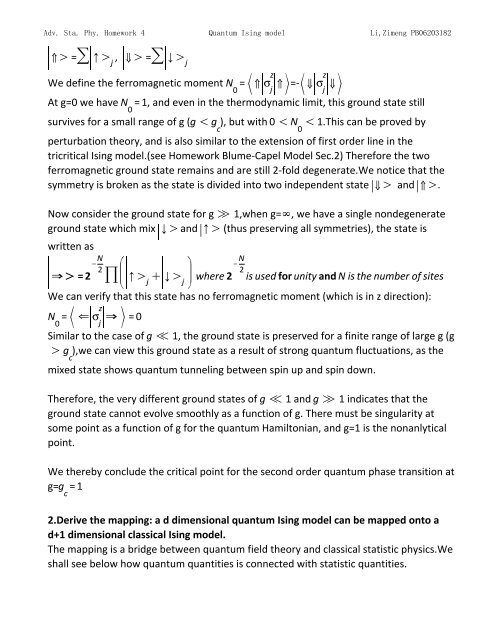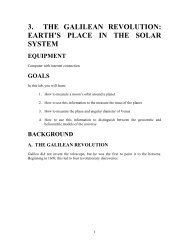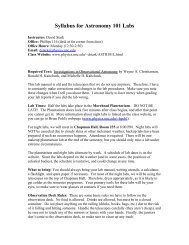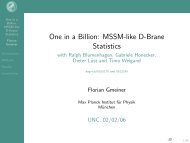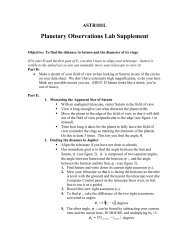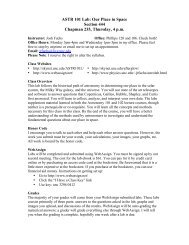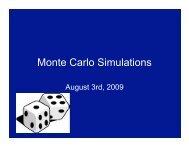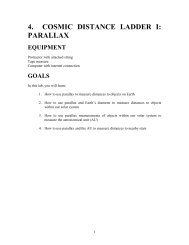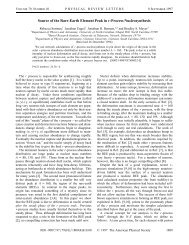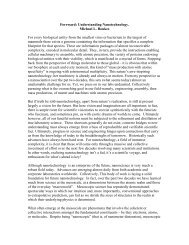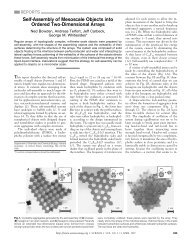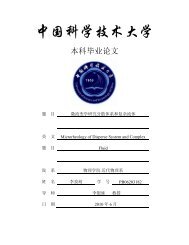Topics in Statistic Mechanics
Topics in Statistic Mechanics
Topics in Statistic Mechanics
You also want an ePaper? Increase the reach of your titles
YUMPU automatically turns print PDFs into web optimized ePapers that Google loves.
Adv. Sta. Phy. Homework 4 Quantum Is<strong>in</strong>g model Li,Zimeng PB06203182<br />
We def<strong>in</strong>e the ferromagnetic moment =-<br />
At g=0 we have<br />
, and even <strong>in</strong> the thermodynamic limit, this ground state still<br />
survives for a small range of g ( ), but with .This can be proved by<br />
perturbation theory, and is also similar to the extension of first order l<strong>in</strong>e <strong>in</strong> the<br />
tricritical Is<strong>in</strong>g model.(see Homework Blume-Capel Model Sec.2) Therefore the two<br />
ferromagnetic ground state rema<strong>in</strong>s and are still 2-fold degenerate.We notice that the<br />
symmetry is broken as the state is divided <strong>in</strong>to two <strong>in</strong>dependent state and<br />
Now consider the ground state for g ,when g= , we have a s<strong>in</strong>gle nondegenerate<br />
ground state which mix and (thus preserv<strong>in</strong>g all symmetries), the state is<br />
written as<br />
We can verify that this state has no ferromagnetic moment (which is <strong>in</strong> z direction):<br />
Similar to the case of , the ground state is preserved for a f<strong>in</strong>ite range of large g (g<br />
),we can view this ground state as a result of strong quantum fluctuations, as the<br />
mixed state shows quantum tunnel<strong>in</strong>g between sp<strong>in</strong> up and sp<strong>in</strong> down.<br />
Therefore, the very different ground states of and <strong>in</strong>dicates that the<br />
ground state cannot evolve smoothly as a function of g. There must be s<strong>in</strong>gularity at<br />
some po<strong>in</strong>t as a function of g for the quantum Hamiltonian, and g=1 is the nonanlytical<br />
po<strong>in</strong>t.<br />
We thereby conclude the critical po<strong>in</strong>t for the second order quantum phase transition at<br />
g=<br />
2.Derive the mapp<strong>in</strong>g: a d dimensional quantum Is<strong>in</strong>g model can be mapped onto a<br />
d+1 dimensional classical Is<strong>in</strong>g model.<br />
The mapp<strong>in</strong>g is a bridge between quantum field theory and classical statistic physics.We<br />
shall see below how quantum quantities is connected with statistic quantities.


